MoMA's Visual Thinking Curriculum Project
A collaboration to improve MoMA's VTC
The Visual Thinking Curriculum (VTC) is a school-based program developed by the Museum of Modern Art (MoMA) that aims to help student learn how to think by talking about art. The program has been developed and refined over the last decade, and is currently used in many New York schools. It has also been adapted to international contexts. In an effort to better understand the cognitive and social benefits the VTC does, or potentially can, provide students, researchers at Project Zero began a year-long investigation of the VTC in October of 1998. The goal of the work was to create a comprehensive picture of the VTC's present and potential strengths, as well as its weaknesses. Over the course of the year, both qualitative and quantitative research methods were used. The qualitative research included individual teacher and staff interviews, classroom observations, student and teacher questionnaires, and group student interviews. The quantitative research consisted of a student performance assessment based on a standard control group/treatment group experimental design. Read the full report here.
Highlights of the major research findings are:
The VTC tends to contribute to a modest but statistically significant increase in the quality of students' evidential reasoning when they are forming interpretations about the meaning of a work of art. This gain also appears to transfer to forming interpretations about the meaning of a non-art image in the domain of science.
The VTC tends to contribute to a modest but significant increase in students' awareness of the subjective, or conditional, nature of interpretation. Like the gains in evidential reasoning, this is a gain in the context of interpreting the meaning of a work of art, and also in the context of interpreting the meaning of a non-art image in the domain of science.
In the area of evidential reasoning, the gains that students receive as a result of the VTC do not appear limited to students of high ability or low ability. Most students experience at least modest gains, and the gains do not appear to favor students of a particular ability level. However, the level of teachers' understanding of the VTC methodology has a strong influence on the degree to which students benefit from the curriculum.
VTC teachers whose students have the highest overall gains tend to push individual students to make detailed observations about works of art and to justify their interpretations with perceptual evidence in the image. At the same time, they encourage a culture of conversation in the class by soliciting comments from many students and encouraging students to respond to one another directly and to reason collaboratively.
Teachers whose students have the lowest gains tend to encourage students to list observations of details in works of art, and tend to discourage students from thinking broadly about the meaning of an image and from exploring disagreements about, or citing evidence for, their individual interpretations.
Students tend to experience the VTC as challenging and engaging, and they appear to intuitively understand what the VTC questions are getting at. In particular, students seem to understand that the VTC methodology has cognitive value in "figuring things out" and understanding meaning.
Students find it easy to imagine transferring the VTC questions to many contexts, inside and outside of school, and in fact report that they do so. Almost all of the connections they mention seem appropriate.
Based on these findings, MoMA began a substantial revision of the VTC in collaboration with Project Zero in 2000. The revised VTC was published by MoMA.


-
-
-
-
-
-
Support PZ's Reach